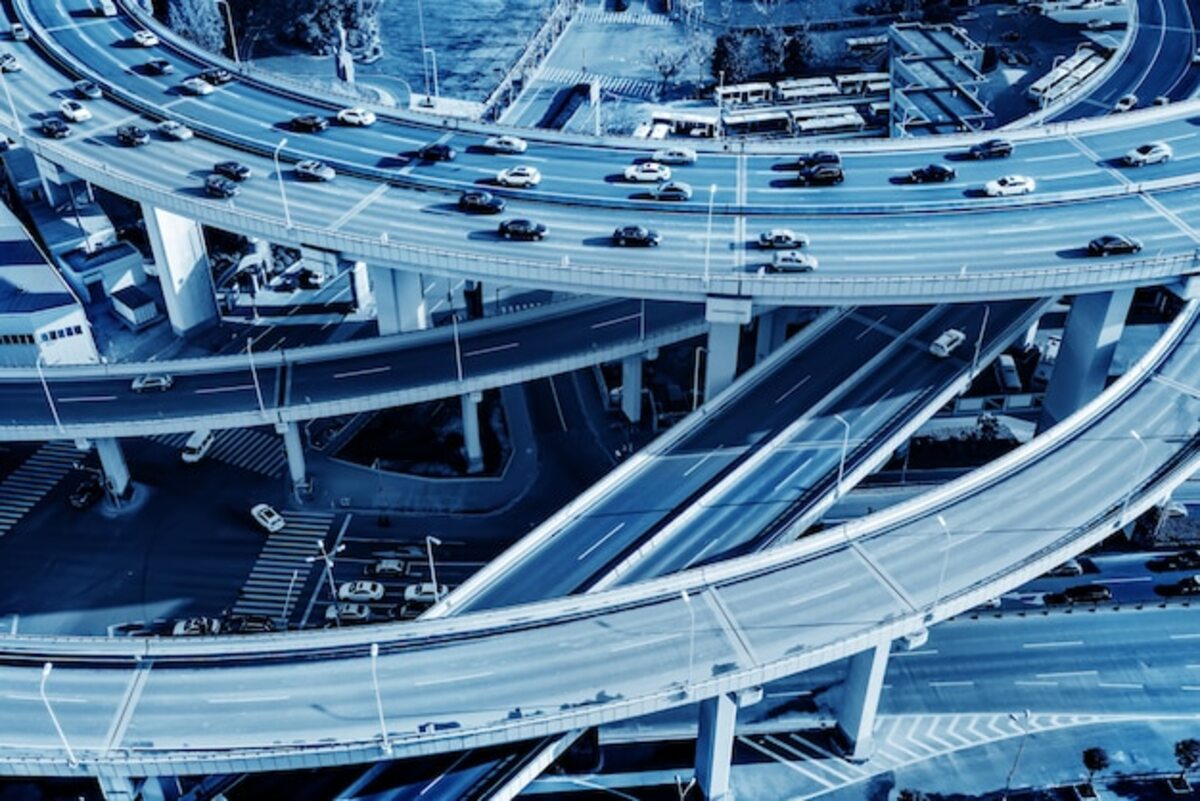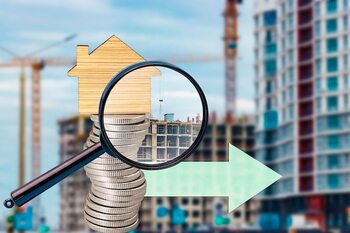New Horizons: the Role of Transportation in Emerging Surplus Value

New horizons: the role of transportation in emerging added value is a crucial topic for understanding how infrastructure development can transform booming areas. In a world where mobility becomes a determining factor, exploring the interrelation between transportation and real estate appreciation will allow us to discover unique opportunities. We will analyze how improvements in connectivity not only facilitate access but also drive economic and social growth, turning previously forgotten areas into coveted destinations.
1. The importance of transportation infrastructure in emerging areas
Transport infrastructure plays a fundamental role in the development of emerging areas, as it acts as a catalyst for investment and economic growth. Improvements in road, rail, and public transport networks not only facilitate the movement of people and goods but also attract companies looking to establish themselves in areas with efficient access. This connectivity is essential to fostering a favorable environment where new business opportunities can develop, which in turn increases real estate demand and elevates the value of local properties. Previously neglected areas begin to transform into economic hubs thanks to these improvements.
Furthermore, transportation infrastructure directly influences the quality of life of residents in emerging areas. By facilitating access to essential services such as education, health, and employment, greater social inclusion and opportunities for all are promoted. This increase in accessibility not only benefits current inhabitants but also generates interest among potential buyers and investors. As communities become more accessible and attractive, a virtuous cycle is created where infrastructure drives economic and social development, thereby contributing to sustainable growth and the overall well-being of the population.
2. Analysis of successful cases: cities that have thrived thanks to transportation
The analysis of successful cases reveals how cities around the world have experienced remarkable growth thanks to the implementation of efficient transportation systems. For example, Medellín, Colombia, has transformed its urban landscape through the innovative use of cable cars and the metro system. These improvements in mobility have not only facilitated access to previously marginalized areas but have also stimulated investments in housing, commerce, and public services. The connection between neighborhoods has been strengthened, generating a social renaissance that goes beyond simple transportation; it is about creating more integrated and dynamic communities.
Another emblematic example is the case of Copenhagen, Denmark, where urban planning focused on sustainable transportation has made the bicycle the preferred means of transport for citizens. By developing infrastructure for cyclists and improving public transportation, the city has reduced vehicular traffic and pollutant emissions, while significantly increasing its real estate value. This approach has attracted both residents and investors interested in properties located near these sustainable routes, establishing Copenhagen as a global model of responsible and prosperous urban development.
3. Impact of public transportation on real estate valuation
Public transportation plays a fundamental role in real estate valuation, as its presence or improvement can radically transform an area. Proximity to metro stations, buses, or trams not only facilitates the mobility of residents but also increases the attractiveness of an area for potential buyers and investors. This accessibility translates into an increase in demand for properties, which in turn drives prices and generates significant added value. Areas with excellent connectivity are often perceived as more desirable, creating a positive cycle in the local real estate market.
Additionally, the impact of public transportation goes beyond mere convenience. As infrastructures are developed and improved, they also foster economic growth by attracting businesses and services that complement urban life. This not only benefits current homeowners by raising the value of their properties but also contributes to revitalizing entire communities, driving affordable housing projects and public spaces. Thus, public transportation emerges as a key catalyst not only for increasing property values but also for promoting sustainable and balanced urban development.
4. Private transport versus public: which is more effective for increasing property value?
Private and public transportation play distinct but complementary roles in increasing the value of an area. Private transportation, while offering convenience and flexibility to users, can encourage development that prioritizes urban sprawl over densification. Areas that rely heavily on private vehicles may experience unchecked growth, which, in the long term, can lead to congestion and negatively impact quality of life. On the other hand, infrastructures designed for public transportation tend to concentrate development around stations and strategic routes, promoting higher population density and equitable access to essential services.
Public transportation not only improves connectivity between neighborhoods and cities, but it can also attract investments by offering a sustainable and accessible alternative. Areas with good public transport connections often see an increase in their appeal to real estate developers, who seek to maximize return on investment by placing residential or commercial projects near these routes. Consequently, areas well-served by public transportation tend to appreciate more quickly than those dominated by private car use. Thus, the choice between these two modes of transport directly influences how emerging urban communities are perceived and transformed.
5. Sustainable transportation projects and their impact on local communities
Sustainable transport projects not only aim to improve mobility but also play a fundamental role in the revitalization and empowerment of local communities. By implementing efficient and accessible public transport systems, such as trams, electric buses, or bike lanes, greater social inclusion is promoted and dependence on cars is reduced. This not only decreases the carbon footprint but also helps foster a healthier and safer environment for residents. Communities that adopt these initiatives often experience an increase in quality of life, as they facilitate access to essential services such as education, health, and employment.
Moreover, the positive impact of these projects goes beyond individual well-being; it also drives a more dynamic local economy. Improved transportation can attract investments and businesses to previously neglected areas, generating jobs and stimulating commercial activity. When communities are well-connected, small entrepreneurs are more likely to find opportunities to grow and expand. As these sustainable infrastructures develop, a virtuous cycle is created where the increase in real estate value not only benefits investors but also provides resources to reinvest in the communities themselves, thus ensuring their continuous and equitable development.
6. The role of government and private investment in transportation development.
The role of the government in the development of transportation is fundamental, as public policies and urban planning are decisive in establishing efficient and accessible infrastructure. Governments have the capacity to prioritize projects that not only improve connectivity but also generate a positive impact on the local economy. Investments in roads, railways, and public transport systems can transform entire regions, attracting both businesses and residents. By promoting the development of adequate infrastructure, a favorable environment for growth and investment is created, which contributes to increasing the value of properties in those areas.
On the other hand, private investment complements government efforts by providing additional resources and expertise in the development of transportation projects. Public-private partnerships (PPP) have proven to be an effective tool for carrying out initiatives that require a high initial investment and specialized management. These collaborations allow for the implementation of innovative and sustainable solutions that optimize the use of urban space. The synergy between state and private financing not only improves existing infrastructures but also ensures their long-term maintenance, thereby ensuring the continuous development of emerging areas and increasing their appeal to both investors and new residents.
7. Future trends in mobility and their influence on emerging areas
Future trends in mobility are charting a new course in emerging areas, where technological innovation and sustainability intertwine to redefine how we move. The incorporation of smart transportation solutions, such as electric vehicles and shared mobility systems, will not only improve air quality and reduce traffic but also provide residents with greater flexibility and convenience. These initiatives are designed to meet the needs of growing communities, which in turn can increase investment in infrastructure and foster greater social cohesion.
Moreover, urban planning focused on efficient public transportation can radically transform the urban landscape of previously underdeveloped areas. By prioritizing accessible and affordable transportation networks, an environment conducive to commercial and residential development is created. This approach not only attracts new residents and investors but also enhances the quality of life by facilitating access to essential services, education, and employment. Consequently, emerging areas become magnets for real estate appreciation, transforming their economic potential into tangible realities that benefit the entire community.
8. How to evaluate land based on its accessibility and transportation options
When evaluating land based on its accessibility and transportation options, it is essential to consider the existing infrastructure and development projections in the area. Proximity to main roads, subway stations, bus stops, and other public transport routes can be a decisive factor in the appreciation of a property. Land that offers easy access to these means is not only more attractive to buyers or tenants, but also tends to experience faster growth in value. Additionally, it is crucial to investigate future urban development plans, as new transport lines or road improvements can significantly increase the area's appeal.
Another important aspect to consider is how accessibility influences the quality of life of its residents. Well-connected areas often provide a more dynamic and convenient environment, which attracts both families and young professionals. This results in a constant demand for residential and commercial properties in areas with good transportation options. Therefore, when evaluating land for investment or development, one should not only look at the present; anticipating future trends in mobility can be key to maximizing return on investment and contributing to the sustainable growth of the area.
9. Strategies for investors: betting on areas with growth potential through transportation
Investment strategies in the real estate sector should focus on identifying areas with significant growth potential, especially those benefiting from transportation infrastructure developments. Proximity to new transportation routes, such as metro lines, train stations, and highways, can radically transform demand in a particular area. Investing in properties near these improvements not only promises appreciation of the property in the short and medium term but also attracts new residents and businesses. A careful analysis of urban planning and development projections will help investors make informed decisions about where to direct their capital.
It is also essential to pay attention to government policies related to transportation and urban planning. Public investments in infrastructure are often a key indicator of future growth; when new road or rail projects are planned, surrounding areas are likely to experience a real estate boom. Investors can benefit by anticipating these changes before they are widely recognized by the market. By focusing on areas that directly benefit from efficient and accessible public transportation, not only is an attractive return ensured, but it also contributes to sustainable development and overall community well-being.
10. Case studies: neighborhoods that have changed due to new transport routes
Case studies of neighborhoods that have undergone significant transformations due to new transportation routes provide tangible examples of the impact that infrastructure can have on real estate valuation. Take as a reference the case of a neighborhood that, following the opening of a new subway line, has seen its commercial offerings diversify and its properties significantly increase in value. The arrival of public transport not only improves mobility but also attracts investments and new residents, creating a domino effect that revitalizes the entire area and transforms its image. These changes are a testament to how a simple urban planning decision can have repercussions in multiple social and economic dimensions.
Moreover, there are neighborhoods where the development of bike lanes and comprehensive alternative transportation systems have encouraged a more sustainable and accessible lifestyle. In these areas, residents enjoy not only greater convenience in their commutes but also a cleaner and safer environment. Initiatives to promote the use of non-motorized transport have incentivized local entrepreneurs to open new businesses aligned with this ecological approach, contributing to economic growth without compromising quality of life. Thus, these cases illustrate how improvements in transportation can be catalysts for a comprehensive transformation that benefits all stakeholders involved in the urban environment.



